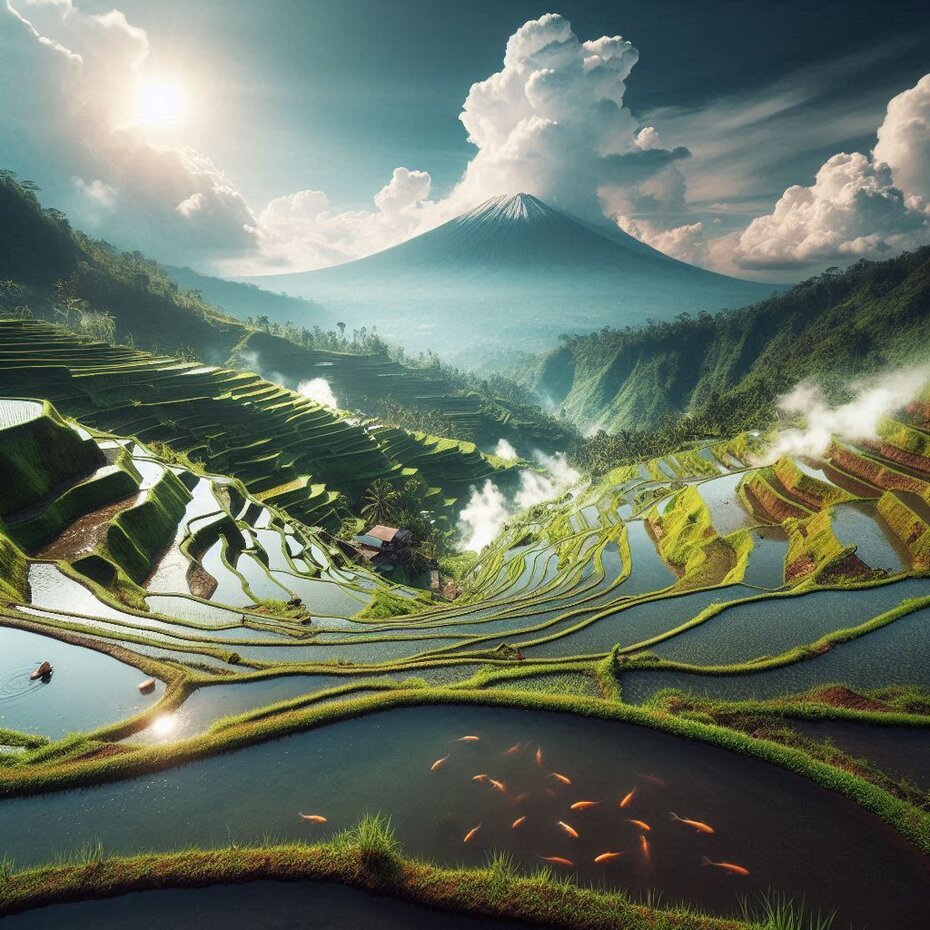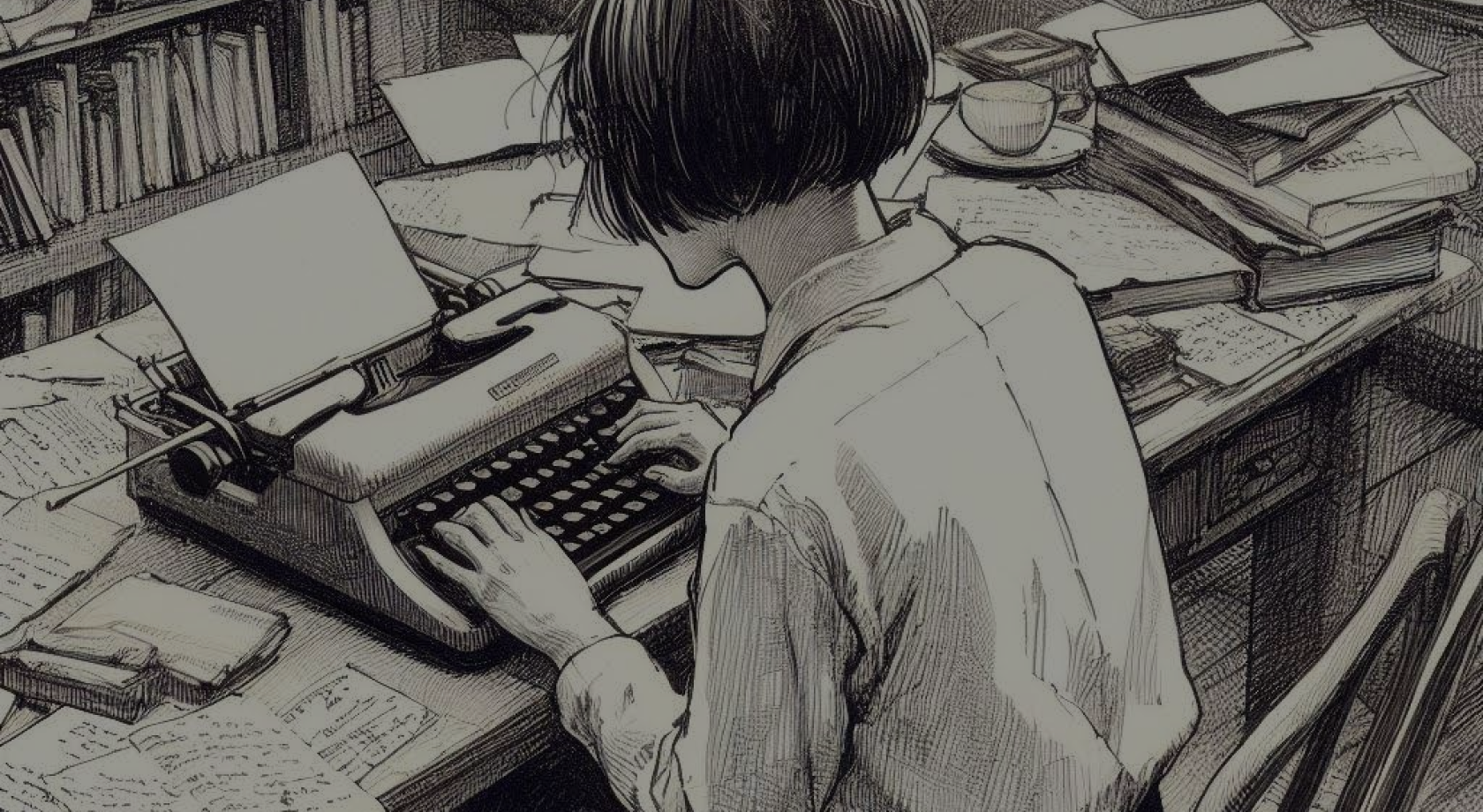The Subaks and the divine act of distributing irrigation water in Bali
Work carried out by an anthropologist and an ecologist in the 1970s showed that the ancient system of managing irrigation water for rice crops in Bali was more efficient than the rice planting techniques then adopted in the West.

When British explorer Alfred Russel Wallace visited the Indonesian island of Bali in 1856, he came across a little corner of paradise that was almost unknown to the rest of the world. Surrounded by coral reefs and scattered around mountains more than 2000m high and two still-active volcanoes, the island had lush vegetation and many Hindu temples. Its terraced hillsides, covered in rice plantations, suggested that the island reigned in eternal spring. However, on the other islands nearby, the situation was quite different: Wallace noticed brown spots on their slopes, indicative of drought.
When he visited the interior of the island, he noticed that rice was grown on flooded terraces, where eels and fish swam among the rice stalks, guaranteeing the natives a bountiful table. The terraces that covered the mountain slopes were crossed by an intricate set of canals, aqueducts, small wooden sluices and tunnels dug by hand into the rock, devised hundreds of years ago, which ensured that rainwater accumulated in volcanic craters high up in the mountains irrigated the entire cultivated area.
When Stephen Lensing visited Bali in 1971, things had already changed a lot. By this time, Bali had been discovered by mass tourism and was experiencing an urgent need to increase its agricultural production to feed the locals and the growing waves of tourists. The government then decreed that the ancient land cultivation practices adopted until then were unpatriotic, and that the settlers should adopt the rice-growing techniques used in the West. The Bali government was aware of the devastating effect on rice production in communist China caused 10 years earlier by Mao's imposition of inappropriate planting techniques, which had led to millions of Chinese dying of starvation. He therefore decided that the so-called "technology packages" would be used in Bali, containing fast-growing rice grains, pesticides and fertilizers distributed free of charge, and that the number of plantings per year should be increased. This change in planting techniques would come to be known as the Green Revolution.
Although rice production increased by around 2% when the Balinese started using the technological packages, numerous problems soon began to appear. The fast-growing rice grains required a greater volume of water to develop, and this led to disputes between the settlers over irrigation water. As there wasn't enough water for everyone, the planting times adopted by farmers on the same slopes became different.
Many insect pests and other organisms began to attack the crops, and part of the slopes became arid. The excess fertilizer used on these lands was carried by the rivers to the sea, causing green patches to form in the ocean due to the overgrowth of algae and the consequent death of coral banks. Although the settlers used increasing amounts of pesticides, as well as rice grains produced by biotechnology to be resistant to pests, the solutions didn't seem to be efficient in the long term, and new problems soon appeared.
During Lensing's months in Bali in 1971, he stayed with a monk's family and divided his days between surfing and trendy bars. Enraptured by the island's culture, he would later decide to become an anthropologist and ended up returning to Bali during his doctorate to study Hindu temples.
After some time researching with the local community, he observed that the function of the Pura Tirta temple differed greatly from that of the others. This temple is dedicated to devotion to Dewi Danu, the goddess of water, who lives in a lake at the top of Mount Batur. Lensing observed that the temple's main function was to host meetings of the subaks, which are collective organizations that decide on the distribution of irrigation water among farmers. Each subak is made up of an association of 50 to 400 settlers who live in adjacent areas of the same hill and who make democratic decisions about the distribution of water, despite the caste system in place in Malaysian society. For the Balinese, water management is considered a form of worship of the water goddess, which explains why the subaks' meetings are held in the water temple. For them, "the voice of the subaks is the voice of God" and their decisions should not be contested by the community.
However, at the time of the Green Revolution, Lensing observed that among farming communities there was strong dissatisfaction with the situation in the subaks. The growing dispute between settlers over irrigation water due to the use of fast-growing seeds had resulted in a privileged situation on the higher ground, and drought on the lower terraces. As a result, dissatisfied settlers began to sabotage the government's modifications to the sluice system.
When Lensing and his colleague, ecologist James Kremer, carried out computer simulations of the situation in the rice fields, they discovered that the reason for all the current problems was poor water management. When all adjacent plots were planted and harvested at the same time, pests were exterminated naturally during periods of nutrient scarcity. Lensing and Kremer's work was presented to government officials, farmers and local governments, showing that rice planting worked best when water management was left to the subaks, who provided the settlers with indications to synchronize or desynchronize their crops with the neighboring subaks depending on the abundance of water and the appearance of pests, forming a system of self-management.
In the 1980s, when the population returned to using the subaks for water management, the crop situation improved greatly and the use of pesticides fell sharply. The understanding of the importance of this system in the success of the rice planting that resulted from this process led to the Balinese subak being placed on UNESCO's Universal Heritage list.
Translated with DeepL.com (free version)
Voltar
